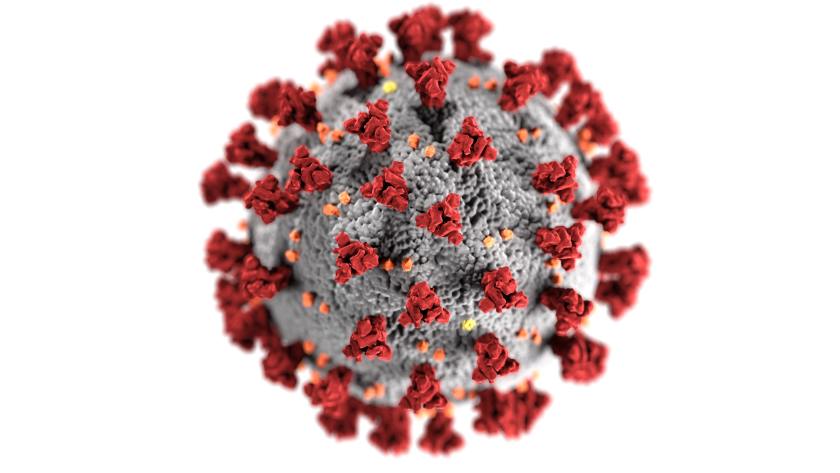by Michael A. Smith, Professor of Political Science, Emporia State University

How did the Coronavirus pandemic become partisan?
The partisan divide on responses to the pandemic is only the latest iteration of a story that has been steeping for more than a decade. Put briefly: the political parties have realigned, with the Democratic Party now firmly entrenched as the party of the professional class. Since this includes many epidemiologists currently estimating the impact of COVID 19, this makes their claims inherently suspect to Republicans. This distrusted professional class also includes mainstream media reporters who are disseminating the news about the pandemic.
While the Democrats also retain others in their coalition, their alignment as the party of university-educated professionals also makes the Republican Party free to align itself as the party of backlash against these professionals. It has done so, particularly under the leadership of President Trump. Of course, there has also been a backlash to the backlash among science professionals themselves, some of whom have sought public office despite never having planned to do so before now.
In one of my last face-to-face classes before online migration, we discussed public acceptance or rejection of scientific research. One of my students suggested that if someone does not trust science, there is not much can be done in the way of persuasion by those of us who do trust that process. This is incomplete. In the case of Republican skepticism, not only toward the Coronavirus outbreak but also toward global warming and a host of other problems raised through scientific research, the problem is not that they distrust science. The problem is, they are less likely to trust scientists, whose views they view as being self-serving, at least in part.
Today’s Trump-supporting Republicans have projected onto the Democratic Party and the word “liberal,” an identification with a professional class that they do not trust, and that they do not believe shares their values. According to them, professionals—including those engaged in scientific research—are part of an elite, self-serving group of people that know less than they tell us they know. Frequently utilizing the Internet, and often relying on conservative publications and Fox News, these critics often “clap back” at researchers with data they have gathered on their own.
In this pandemic, the most-frequent tactic of these doubters is to juxtapose their own findings regarding how many people have currently tested positive, and how many have died from the virus, with the much-higher estimates of how many will contract it (including those who already have it but have not been tested), and how many will die. The difference is vast. As I write, the number of Americans known to have died of COVID 19 is about 6600, well short of the number who die each year of Influenza strains. Yet one panel of epidemiologists projections holds that even with actions we have already taken, approximately 195,000 Americans will die directly from the virus even with the precautions currently in place. Others may be lost after being turned away from overflowing hospitals which have no beds or staff available to treat other life-threatening conditions, particularly in “hot spots” such as New York City. Still other estimates hold that far more people have Coronavirus but have not been diagnosed, due to a shortage of test kits and the fact that the virus can manifest itself with mild symptoms or even none at all, yet these carriers can still spread it.
The latter numbers are all estimates, computed with computer models by experts. They are only valid if one trusts the data-gathering, the computer models, and most of all, the experts themselves. Democrats overwhelmingly tell pollsters that they do trust these experts. Republicans are not so sure. A recent Pew poll found that 59% of Democrats and independents leaning Democratic saw the pandemic as a major threat. For Republicans and Republican leaners, the number drops to 33%. Republicans generally do not deny the existence of a new strain of Coronavirus, nor that it is spreading around the world. Rather, they distrust the experts regarding the danger it poses, and what to do about it.
This map shows the notable divide between Democratic governors and Republican ones, regarding stay-at-home policies. As this blog entry goes to press, twenty two states with Democratic governors now have such policies, versus nine with Republican governors. Interestingly, these nine Republican governors include three which are currently serving in heavily Democratic “blue” states—Massachusetts, Maryland and Vermont. How did they get elected? Voters are more willing to cross party lines to elect governors than they are for virtually any other office these days. This leads to an interesting takeaway for those coping with the pandemic: Americans have more faith in state and local governments than in the federal government, to handle the problem.
Outside of the current pandemic, no contemporary issue more starkly illustrates this partisan divide than global warming, or climate change. The term climate change itself was coined by a Republican pollster, apparently because it was less foreboding than global warming. This pollster has since changed his position.
Lexicon does not deter Democrats and Democratic leaners, 78% of whom agree that addressing climate change should be a top priority for the president and Congress. For Republicans and Republican leaners, the number drops to 31%. Those skeptics that delve more deeply into the issue often offer their own evidence, similar to the current comparisons of Coronavirus deaths to date and those from the flu. Climate change skeptics argue that the problem is exaggerated. Experts, or “so-called experts,” as the deniers would say, counter that the full scope of the problem is quite serious and it captured by better, more accurate measures than those used by the skeptics. Yet in order to make this leap of faith, one must trust the data, the models, and most of all, the experts themselves. For most Republicans, this is nothing doing. As with the epidemiologists mentioned above, Trump supporters often dismiss these climatologists as a self-serving political class out for their own interests. Even the relatively-mainstream Wall Street Journal has editorialized that climatologists are exaggerating the threat.
This distrust of “so-called experts” runs so deep that a few years ago, a sitting speaker of the Kansas House of Representatives suggested that the state should stop using the longstanding practice of budgeting based on consensus revenue estimates compiled by economists. The then-Speaker proposed that only the amount of money the state currently had on hand should be used for budgeting. His critics were quick to counter that revenues vary throughout the year—for example, at tax filing time and during Christmas shopping season—and that the consensus estimates had been used for years and had generally proven accurate. But for Speaker Merrick, the so-called experts espousing estimates instead of counting the actual money on hand were just spouting more government hocus pocus and mumbo jumbo to keep their positions. If you want to know how much money you have, just count it.
Of course, the doubters’ favorite example of a blown call by experts concerns Trump’s victory itself. As I detail in this blog entry, the assumption that Hillary Clinton had the election in the bag was widespread among reports and pollsters, and it seemed to fit the data from public opinion polls. However, many political scientists did, in fact, predict that Trump at least had a credible chance to win. As noted expert Nate Silver put it, the data did show that “Donald Trump has a path to the presidency.” The problem came when we second-guessed Silver’s and other research findings. Incidentally, the related argument that a poll is not valid unless you or someone you know, personally, has been polled is another classic example of this disagreement. From a social-scientific standpoint, this objection is absurd. Polling is based on randomized sampling. But for Trump supporters, this argument is just another way to counter the so-called experts with some good old common sense.
In the 1950s, professionals often aligned with the Republican Party. In fact, in the landmark study The American Voter by Converse, Campbell, Miller, and Stokes (1960), the group interest voters were was found to be the largest bloc, and the most commonly-used statements by these voters (using the gendered language of the day) was, “Democrats are for the working man, Republicans are for the businessman.” Today, the political system has realigned, with professionals trending heavily toward Democrats. While they have long led among voters with postgraduate degrees, Democrats have now overtaken Republicans in support from voters with Bachelor’s degrees as well. College-educated women are a major reason why the Democrats where able to retake the House majority in 2018, running particularly strongly in suburban districts.
In short, America’s divided response to Coronavirus reflects a partisan realignment, with most of the professional class identifying as Democratic or Democratic leaning, while most of their critics favor Republicans. It is distrust of these experts—or so-called experts—that drives our partisan response to the current pandemic.
 Michael A. Smith is Professor of Political Science and Chair of Social Sciences at Emporia State University. He has authored or co-authored three books, the most recent of which is co-authored with two Emporia State colleagues, Drs. Bob Grover and Rob Catlett. It is entitled Low Taxes and Small Government: The Brownback Experiment in Kansas and was released by Lexington in 2019. He has other academic publications as well, and also writes newspaper columns carried throughout Kansas as part of the Insight Kansas group and blogs for the MPSA. Michael appears occasionally on television and radio in Kansas and western Missouri to discuss state and national politics. He was an expert witness for the plantiff in the Bednasek v Kobach case, decided together with Fish v Kobach by the federal district court for Kansas in 2018. Michael teaches courses in American politics, state and local government, and political philosophy. He received his Ph.D. from the University of Missouri in 2000. Follow Michael on Twitter.
Michael A. Smith is Professor of Political Science and Chair of Social Sciences at Emporia State University. He has authored or co-authored three books, the most recent of which is co-authored with two Emporia State colleagues, Drs. Bob Grover and Rob Catlett. It is entitled Low Taxes and Small Government: The Brownback Experiment in Kansas and was released by Lexington in 2019. He has other academic publications as well, and also writes newspaper columns carried throughout Kansas as part of the Insight Kansas group and blogs for the MPSA. Michael appears occasionally on television and radio in Kansas and western Missouri to discuss state and national politics. He was an expert witness for the plantiff in the Bednasek v Kobach case, decided together with Fish v Kobach by the federal district court for Kansas in 2018. Michael teaches courses in American politics, state and local government, and political philosophy. He received his Ph.D. from the University of Missouri in 2000. Follow Michael on Twitter.
